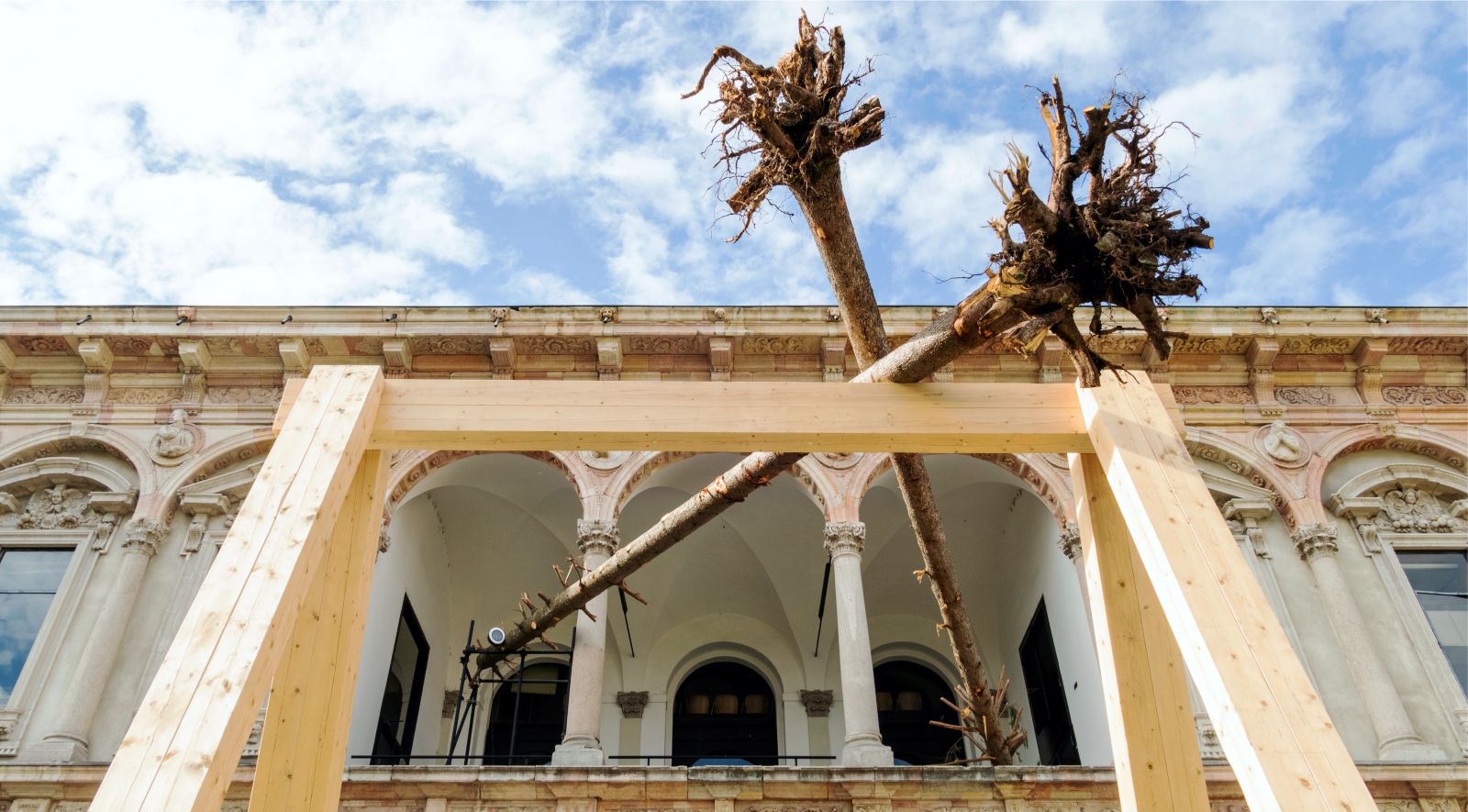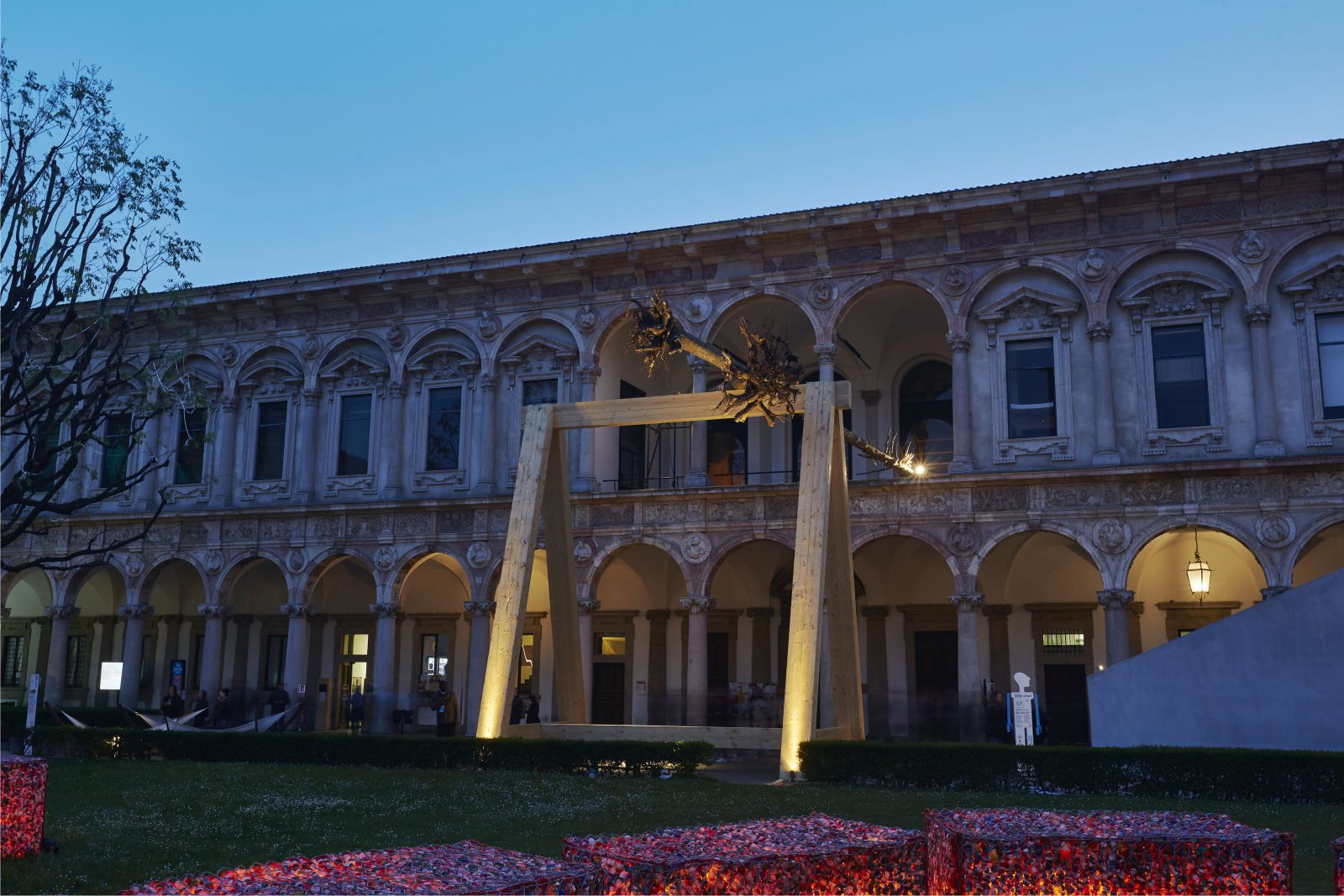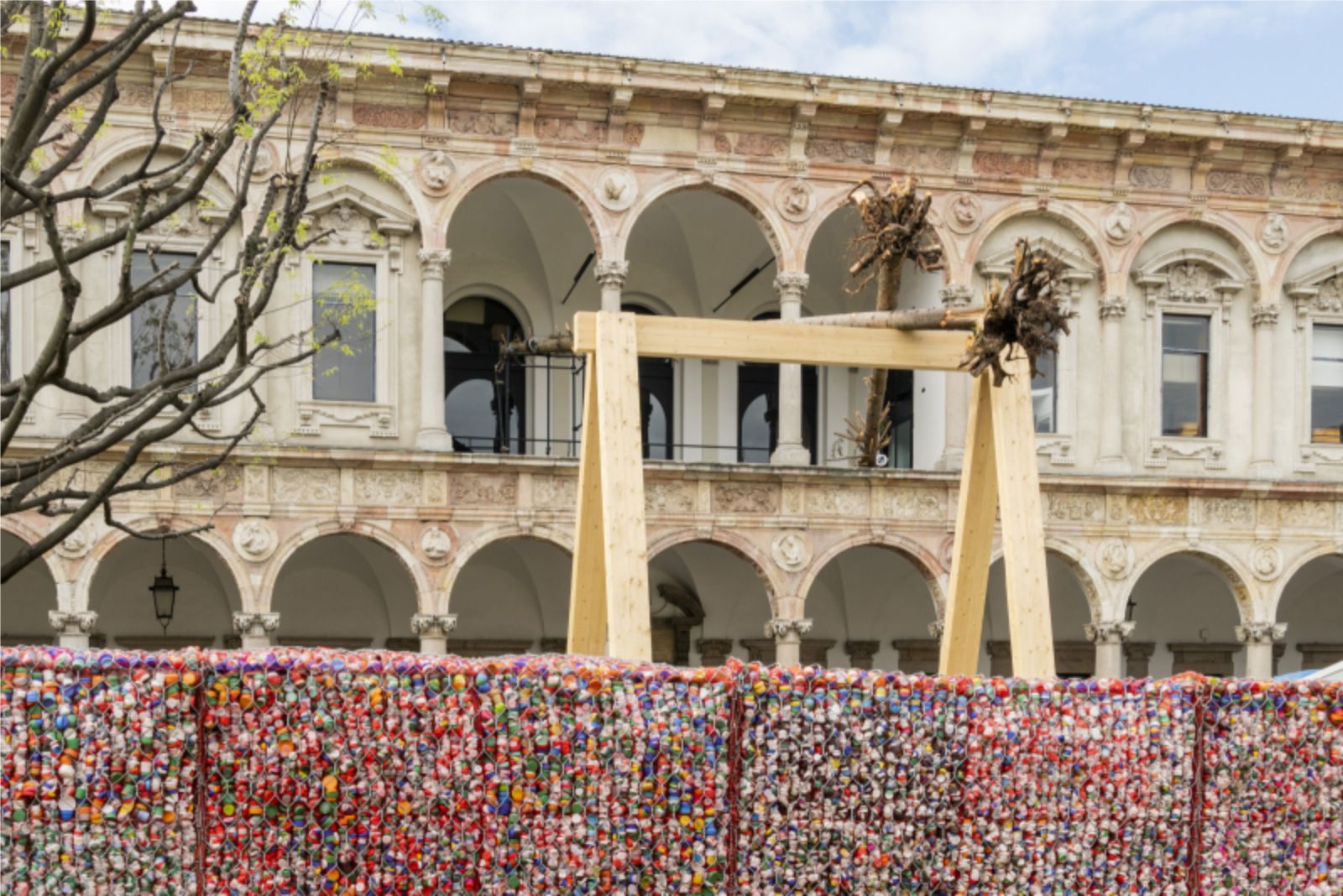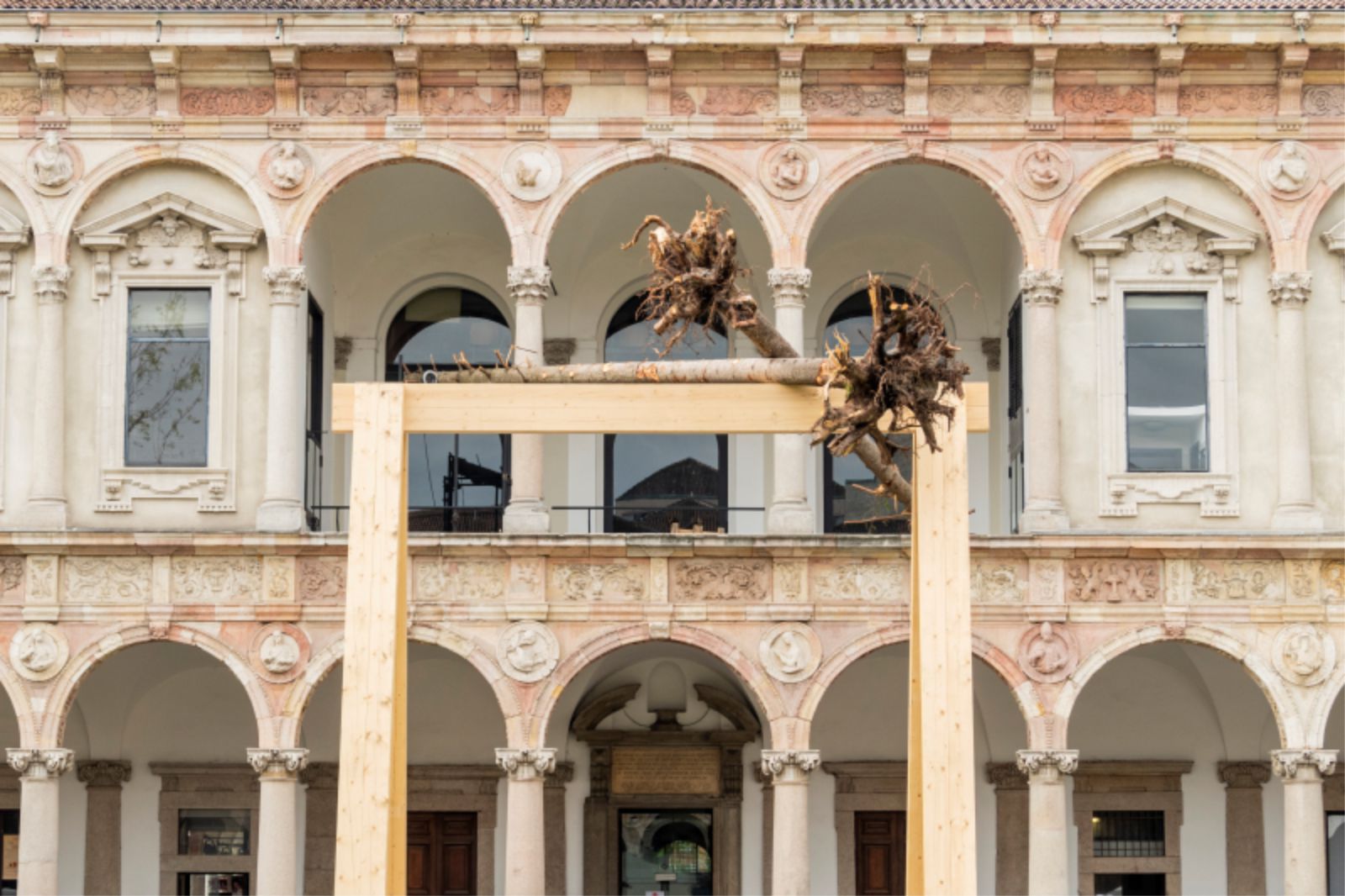During Milan Design Week 2019, Piuarch presents “La Foresta dei Violini”: an installation sponsored by CityLife, which aims at representing the value of the spruces wood of Fiemme Valley (Trentino Alto Adige, Italy). On the 29th October 2018 a storm and a 200-km/h-wind ravaged a centuries-old natural balance, hitting more than 12 million trees on the Alps. Among these there is Paneveggio Forest, also known as Stradivari’s Forest. A place renowned for the spruces growing there and it has been forever used to make the best acoustic violin sound cases. Based on a concept by Nemo Monti, Piuarch designed an evocative installation which will stand out in the Main Courtyard of the University of Milan within the INTERNI HUMAN SPACES event.
Concept
“La foresta dei violini” is an evocative sign of the lost forest, and its absence. A tribute to the territory, to the forests, to the nature; to the communities that create their crafts thank to that natural environment, as well as to the wood supply chain born on those territories; to the arts that create those wooden instruments and to the artists that those instruments play to give back emotional music. Made of rough wood, using broken trees eradicated by the wind, “La Foresta dei Violini” represents a place of memories, witness of the violated nature, where architecture is both support and relief.
The Installation
Two large spruce trunks emerge from the loggia of Main Courtyard of the University of Milan: the roots suspended in the void overlook a balustrade on the courtyard, supported by an architectural easel made of worked red spruce wood. Disrupted trees, segments of memory, evidence of the infringed nature. Roots in the wind. Architecture remains in between. The easel is an elementary support, the essential structure, which follows the work in all its stages.
The artifact is a bridge between things and ideas: a geometric shape that lies in the wood carving, in the intersection of straight forms, it is the sum of singularities. It bears the weight, connects different borders, has many names and functions in the human jargon. For these reasons it is the simplest, most common and universal symbol of the ancestral relationship between technique and nature, between raw material and transformation. Made of worked red spruce, it is the archetype of the craftsman work who repairs. Nature comes first.
Paneveggio Forest, The Acoustic Forest
Paneveggio Forest is renowned because is where the spruce trees used to make the most elegant and precious instrument, the violin. Spruce trees are almost the 90% of the trees in the forest, associated with silver firs at lower altitudes, larch and Swiss pine to the upper ones. And it is among these thousands of shades of green that master luthier Stradivari got lost looking for the most suitable trees for the making of his violins: the centuries-old red fir trees whose wood, thanks to its particular resonance capacity, provides the ideal raw material for the construction of sounding
boards.
This wood is characterised by a great elasticity that guarantees to better transmit the sound, and its lymphatic channels are like tiny organ pipes that create resonance. For this reason the trees are felled in the waning moon, between October and November, when in the trunk there is less quantity of sap. The best ones can be recognised for the very thin and perfectly concentric growth rings with straight and fine fibers and few knots. It was in this forest that the greatest violin makers of Cremona reached the perfection of sound and many of the specimens are still kept today in the Violin Museum of the city. Source by Piuarch.
- Location: Via Festa del Perdono 7, Milan, Italy
- Design: Piuarch
- Concept: Nemo Monti
- Partner Light service: L&L Luce&Light
- Partner Paint forniture service: ILVA
- Sponsor: CityLife
- Support: Provincia Autonoma di Trento, Magnifica Comunità di Fiemme, Patronage Università di Trento
- Date: 8 – 19 April 2019
- Photographs: Leonhard Angerer, Courtesy of Piuarch










